Creating a nurturing and peaceful environment for your little one begins with the right design elements. Green nurseries are not just about incorporating the color; they symbolize growth, renewal, and harmony. This article delves into the tranquil green nursery designs, exploring how various shades of green, combined with thoughtful design choices, can create a soothing and healthy space for your baby.
Harmonizing Hues: The Tranquility of Green in Nursery Design
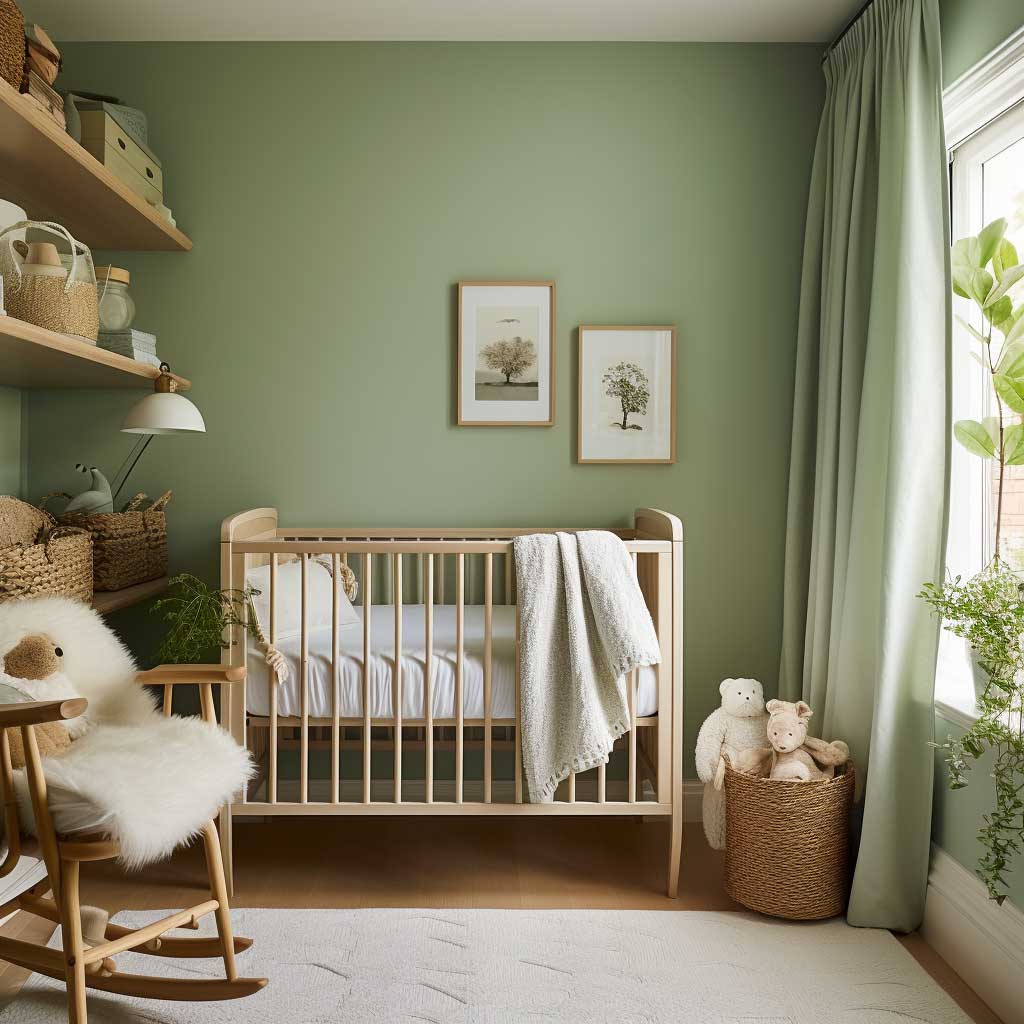
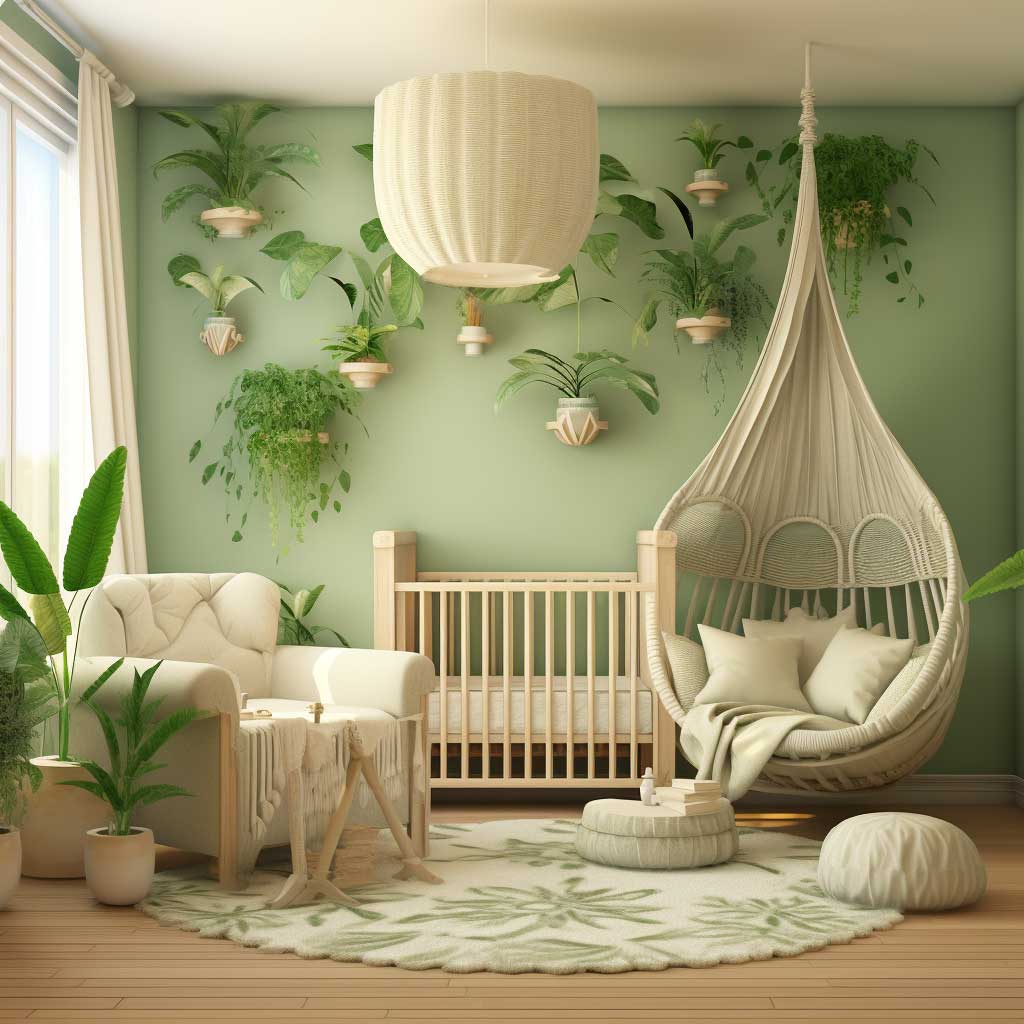

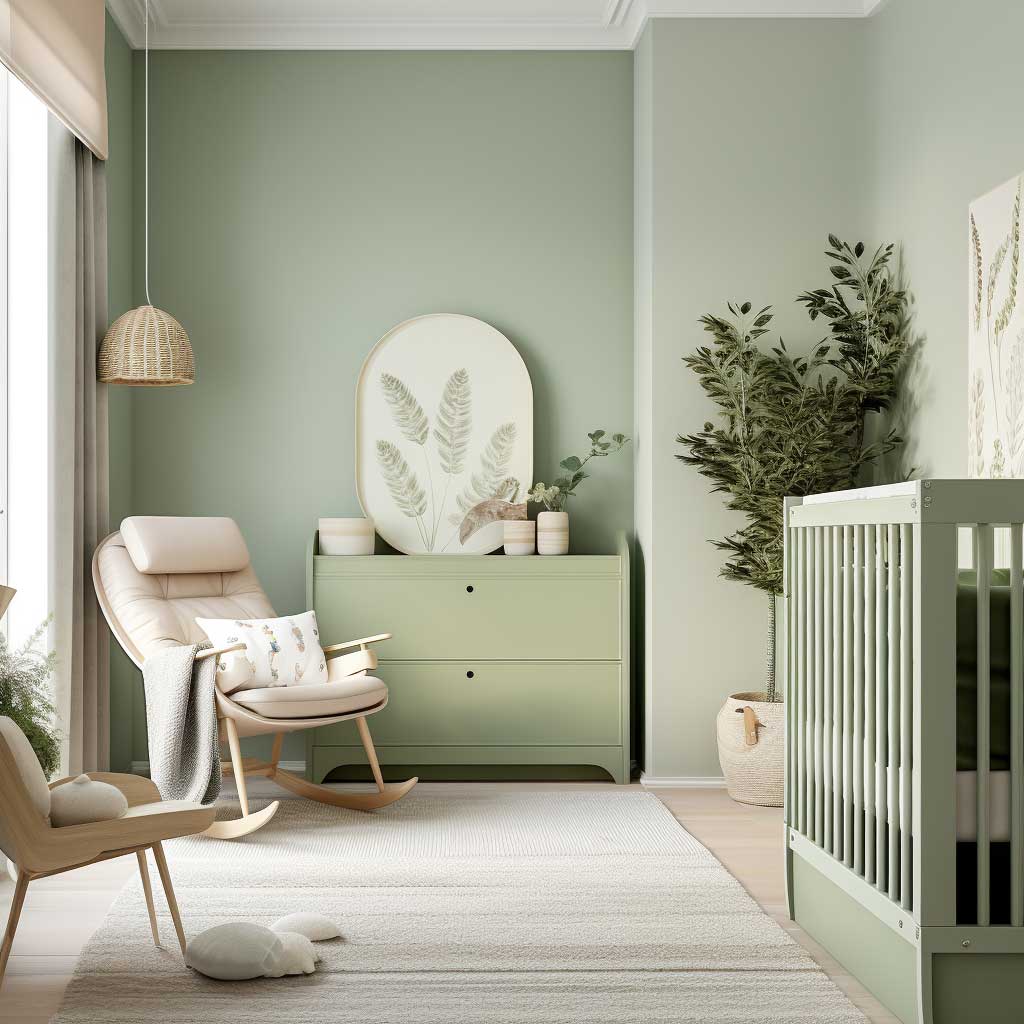
In the realm of nursery design, the color green holds a special place. Known for its calming and rejuvenating qualities, green is the ideal choice for creating a serene and tranquil environment for a newborn. This essay delves into the ways varying shades of green can be harmoniously integrated into a nursery, crafting a space that is soothing for both the baby and parents.
The foundational element in green nursery design is the color palette. Light green walls set a soft and gentle backdrop, instantly infusing the room with tranquility. This choice of a muted, pastel hue serves as a canvas upon which deeper shades of green can be layered. The subtle variation in tones creates depth and interest without overwhelming the senses.
Accentuating the light green walls, deeper green textiles play a pivotal role. Curtains, rugs, and bedding in richer shades of green add warmth and comfort to the nursery. These elements are more than just decorative; they contribute to a cohesive color scheme that stimulates visual harmony. The textiles can also feature patterns that evoke nature, such as leaves or abstract organic shapes, subtly reinforcing the room’s natural theme.
Incorporating plant life is an effective way to bring a sense of the outdoors into the nursery. Plants not only enhance the green color scheme but also purify the air, creating a healthier environment for the baby. Low-maintenance and non-toxic plants are ideal choices. They can be placed in stylish pots that complement the room’s decor, adding a touch of elegance and life.

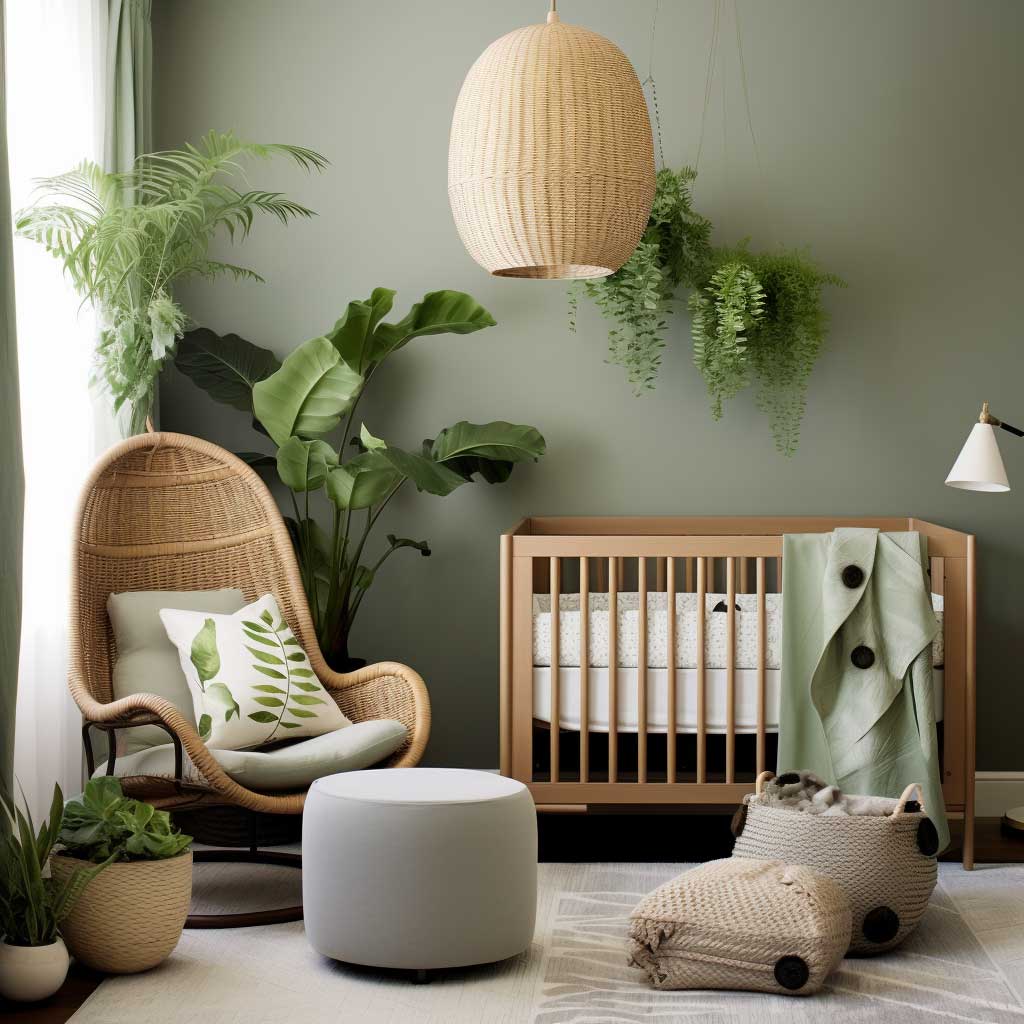
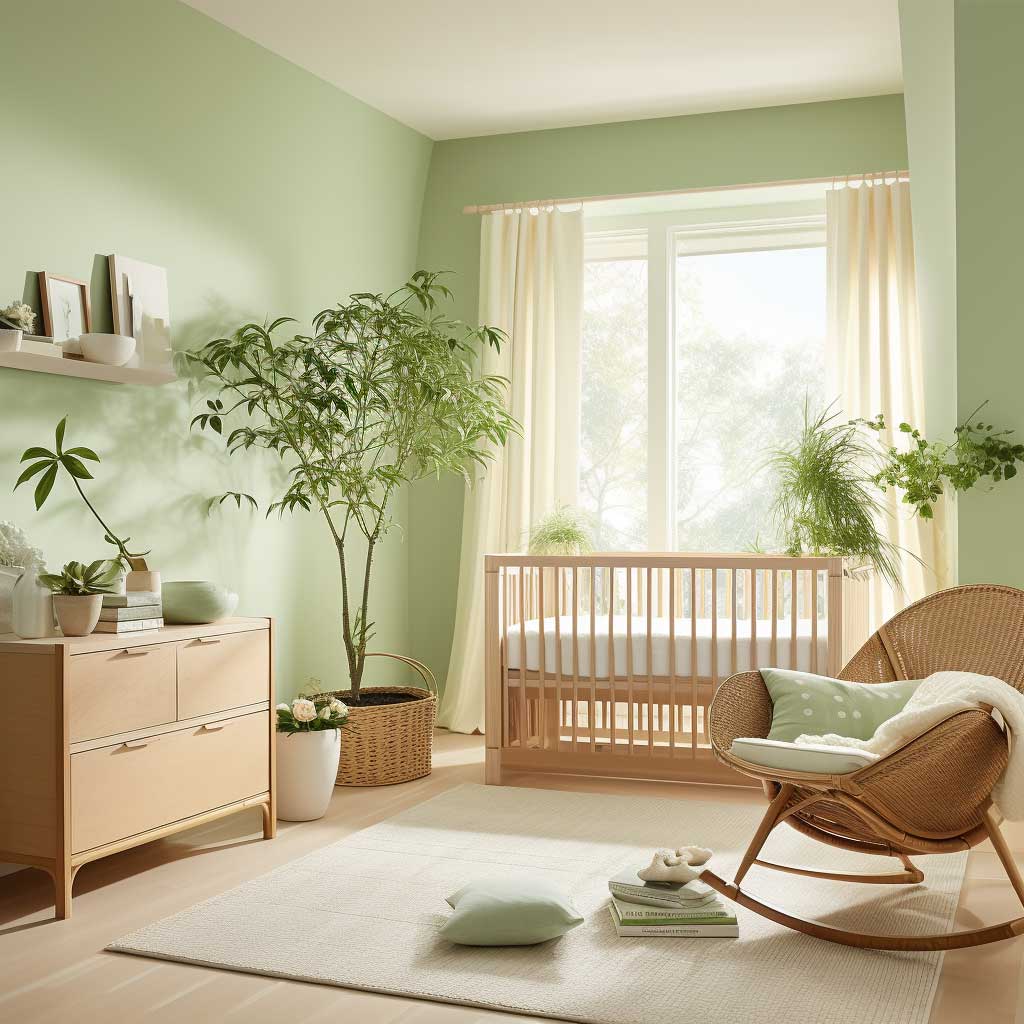
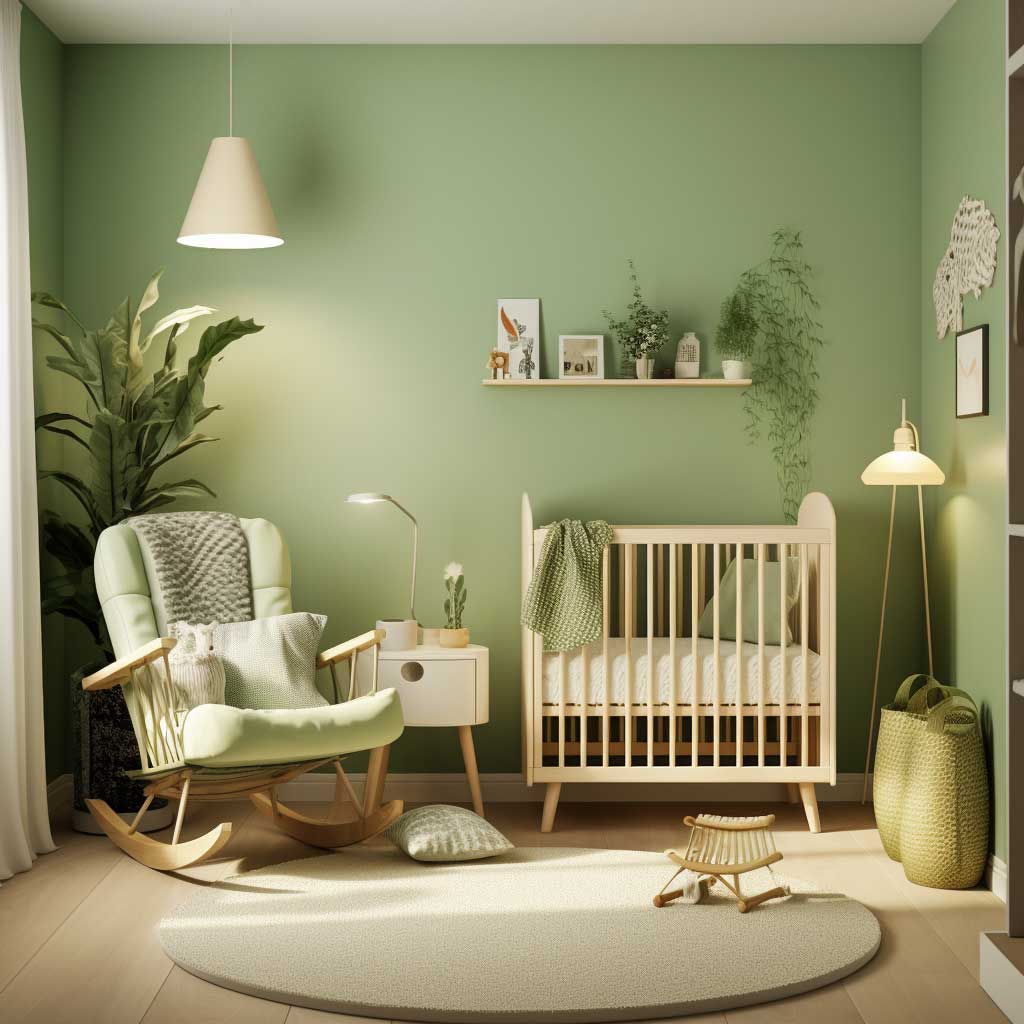
Furniture selection is crucial in green nursery design. Pieces in natural wood tones work well with the green theme, adding warmth and grounding the space. The furniture’s design should prioritize safety and functionality, with cribs, changing tables, and storage solutions that meet all safety standards and provide easy access.
Lighting plays a significant role in creating the right ambiance. Soft, diffused lighting that mimics natural light is ideal. It’s gentle on the baby’s eyes and contributes to the overall calm atmosphere. Accent lighting, such as a decorative lamp with a green shade, can be used to highlight specific areas of the room.
Accessories and decor items are the finishing touches in a green nursery. Wall art featuring nature-inspired themes, soft toys in varying shades of green, and decorative pillows create a cohesive and inviting space. These items should be carefully selected to maintain the tranquil and harmonious atmosphere.
In conclusion, a green nursery is a sanctuary of peace and tranquility. By skillfully blending different shades of green and incorporating elements inspired by nature, it’s possible to create a nurturing environment that promotes relaxation and well-being. The green nursery is not just a trend; it’s a thoughtful approach to design that considers the emotional and physical comfort of the baby and the parents, creating a space where they can bond and grow together.
Blending Nature and Modernity in Green Nursery Design

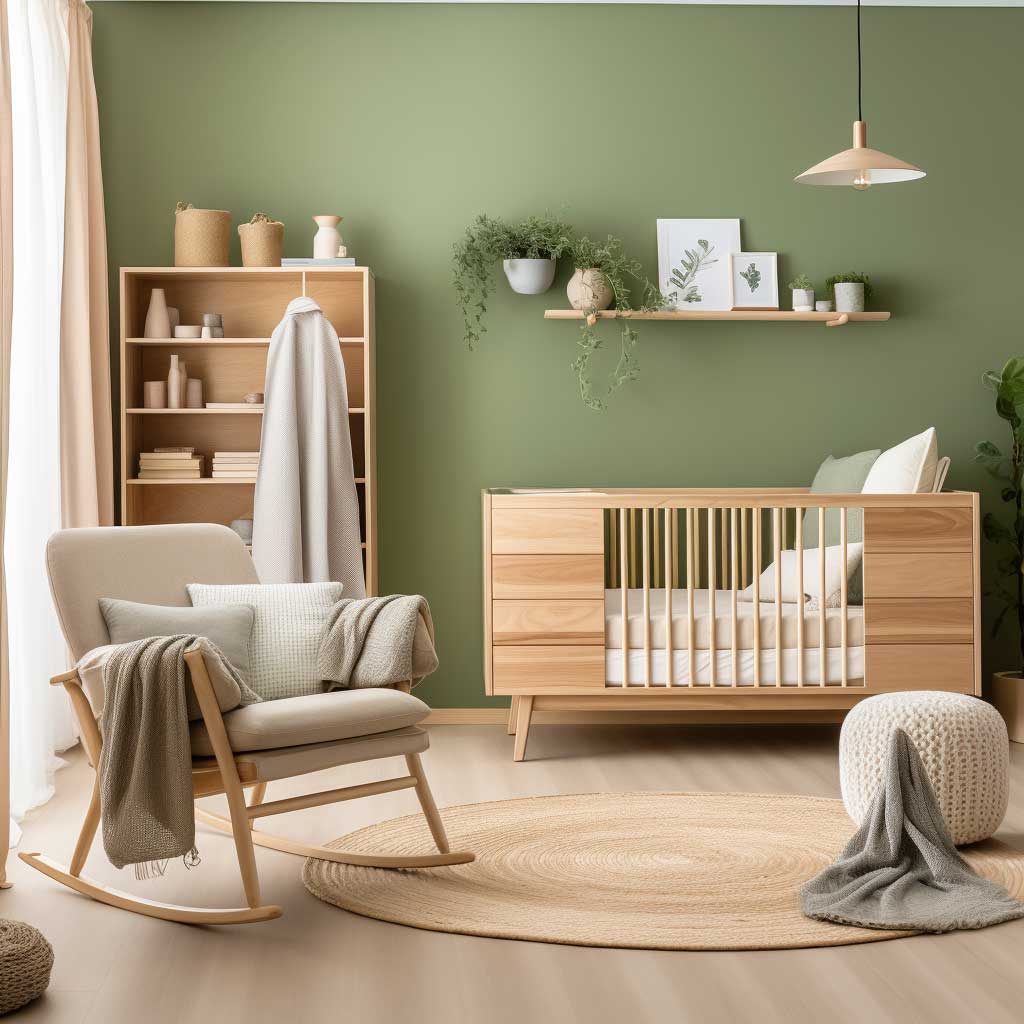
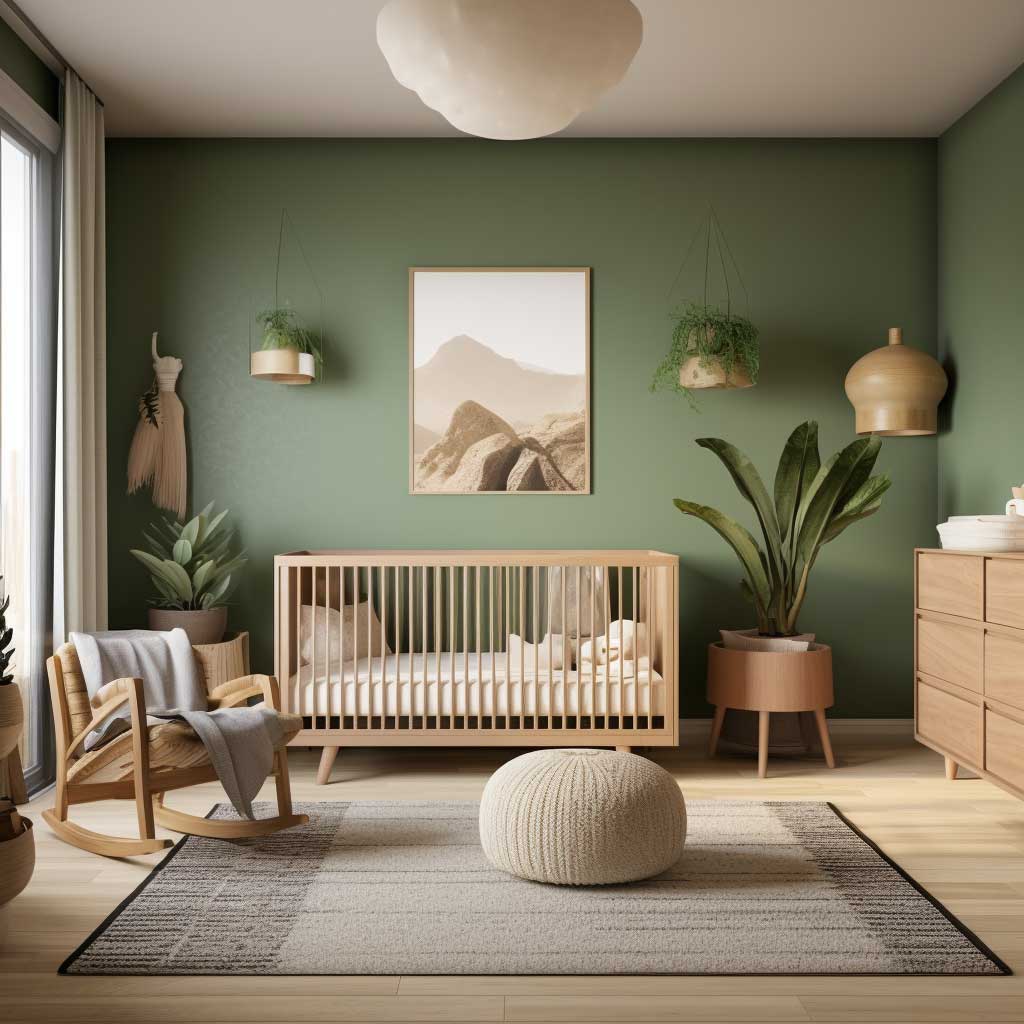

When designing a nursery, the incorporation of natural elements in a modern context offers a refreshing and comforting approach. A green nursery, accentuated with wooden elements and organic fabrics, provides a harmonious blend of contemporary style and natural warmth. This essay explores how the fusion of these elements can create a nurturing and aesthetically pleasing environment for a baby.
In the green nursery, the color scheme sets the stage for a serene and inviting ambiance. The use of green, in its various shades, imbues the room with a sense of freshness and vitality. The green hues, particularly when used in bedding, curtains, and other textiles, offer a visual connection to nature. This connection is deepened when organic fabrics, known for their natural textures and eco-friendly properties, are used.
Wooden furniture is a key component in integrating the natural world into a modern nursery design. Pieces such as cribs, changing tables, and rocking chairs crafted from wood not only provide durability and safety but also add a touch of earthiness. The natural grains and textures of wood furniture bring an element of the outdoors inside, creating a soothing and grounded atmosphere.
The modern aspect of the nursery design is reflected in the clean lines and simplicity of the furniture and decor. Contemporary design principles emphasize functionality and minimalism, which are particularly important in a nursery. The modern design ensures that the space is not cluttered and is easy to navigate, making it practical and safe for both the baby and the parents.

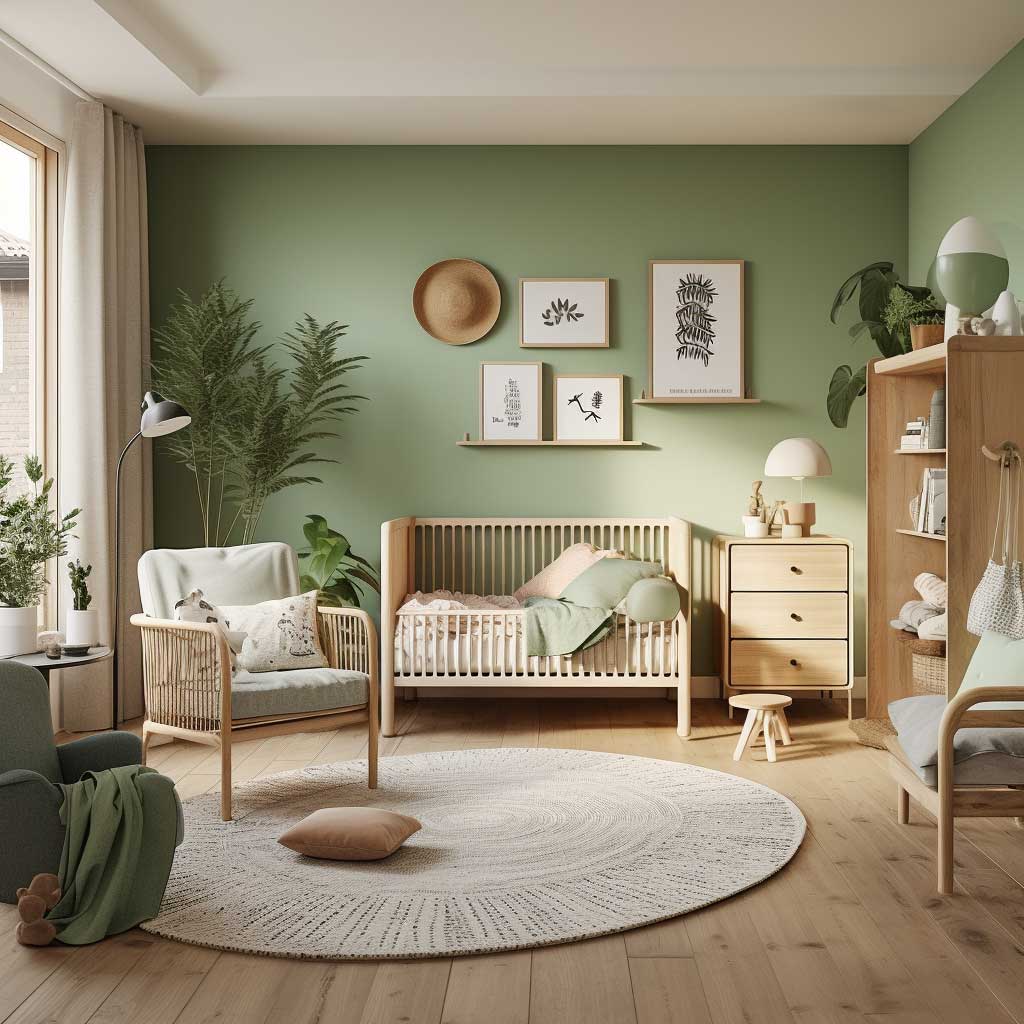

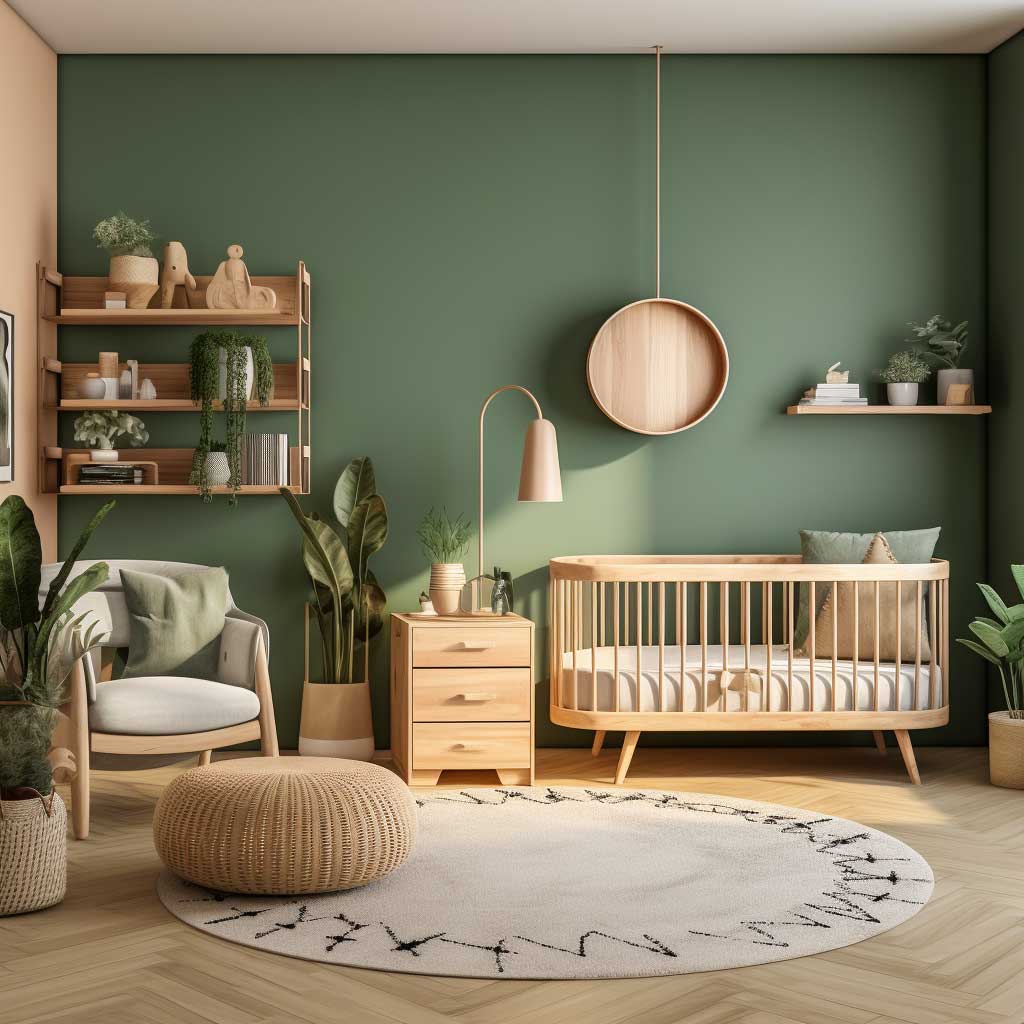
Organic fabrics play a crucial role in this green nursery design. Materials like organic cotton and bamboo are soft, hypoallergenic, and free from harmful chemicals, making them ideal for a baby’s sensitive skin. These fabrics can be used in bedding, blankets, and even wall hangings. Their natural qualities not only contribute to the room’s aesthetic but also to the health and comfort of the baby.
The incorporation of greenery through plants or botanical-themed artwork adds an extra layer of connection to nature. This inclusion not only enhances the room’s aesthetic appeal but also has practical benefits, such as improving air quality and providing a calming visual element.
Lighting in this green nursery design should be warm and gentle. Soft, ambient lighting mimics the soothing effect of natural light and creates a cozy atmosphere. This type of lighting is conducive to the baby’s sleep patterns and overall well-being.
Decorative elements should complement the room’s modern and natural theme. Simple yet elegant decor pieces, such as wooden mobiles, nature-inspired wall art, or soft green rugs, can tie the room together. These elements should enhance the room’s peaceful and nurturing environment without causing overstimulation.
In conclusion, the green nursery design that combines modern elements with natural touches offers a balanced and harmonious space for a baby. The use of green tones, wooden furniture, and organic fabrics creates a nursery that is not only visually appealing but also a healthy and comforting environment for a child’s early years. This design approach reflects a growing desire among parents to create spaces that are both stylish and attuned to the well-being of their children and the environment.
Creating a Green Oasis: Nature’s Touch in Modern Nursery Design

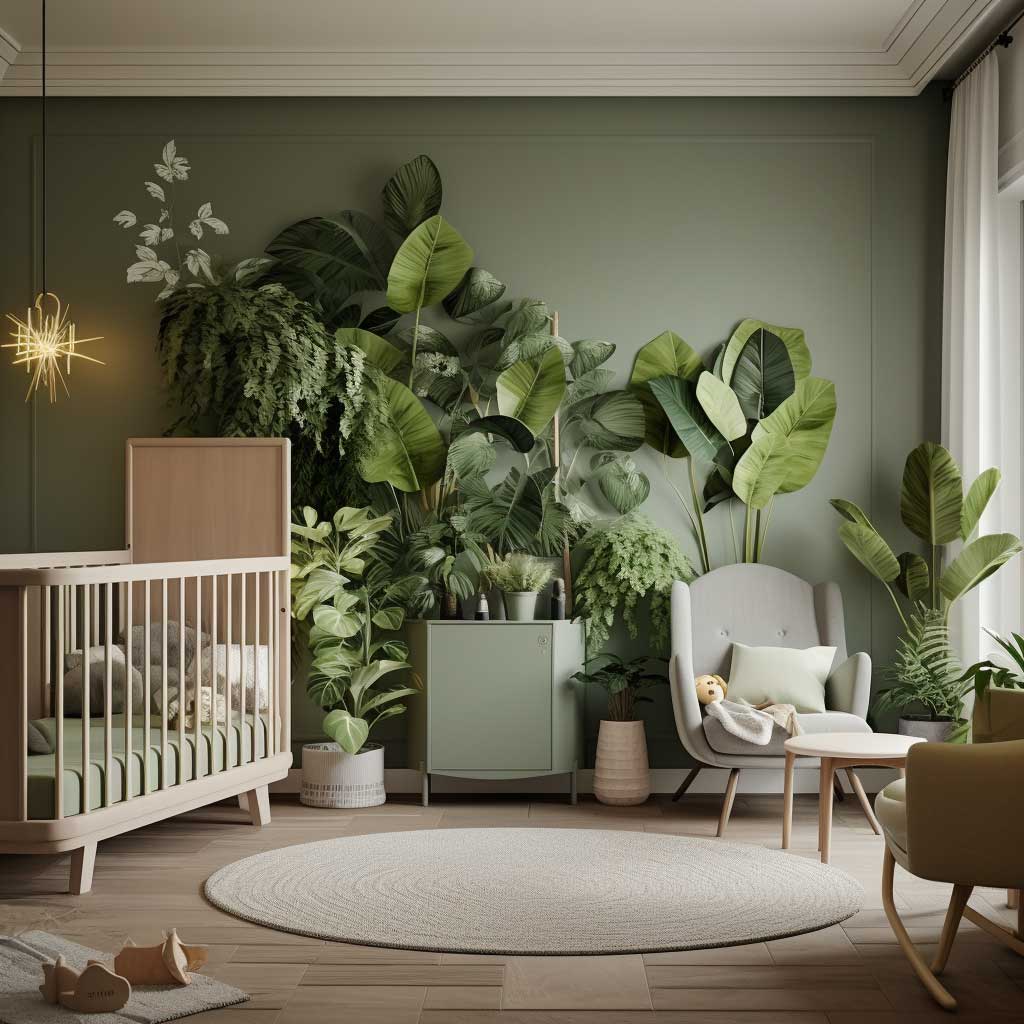
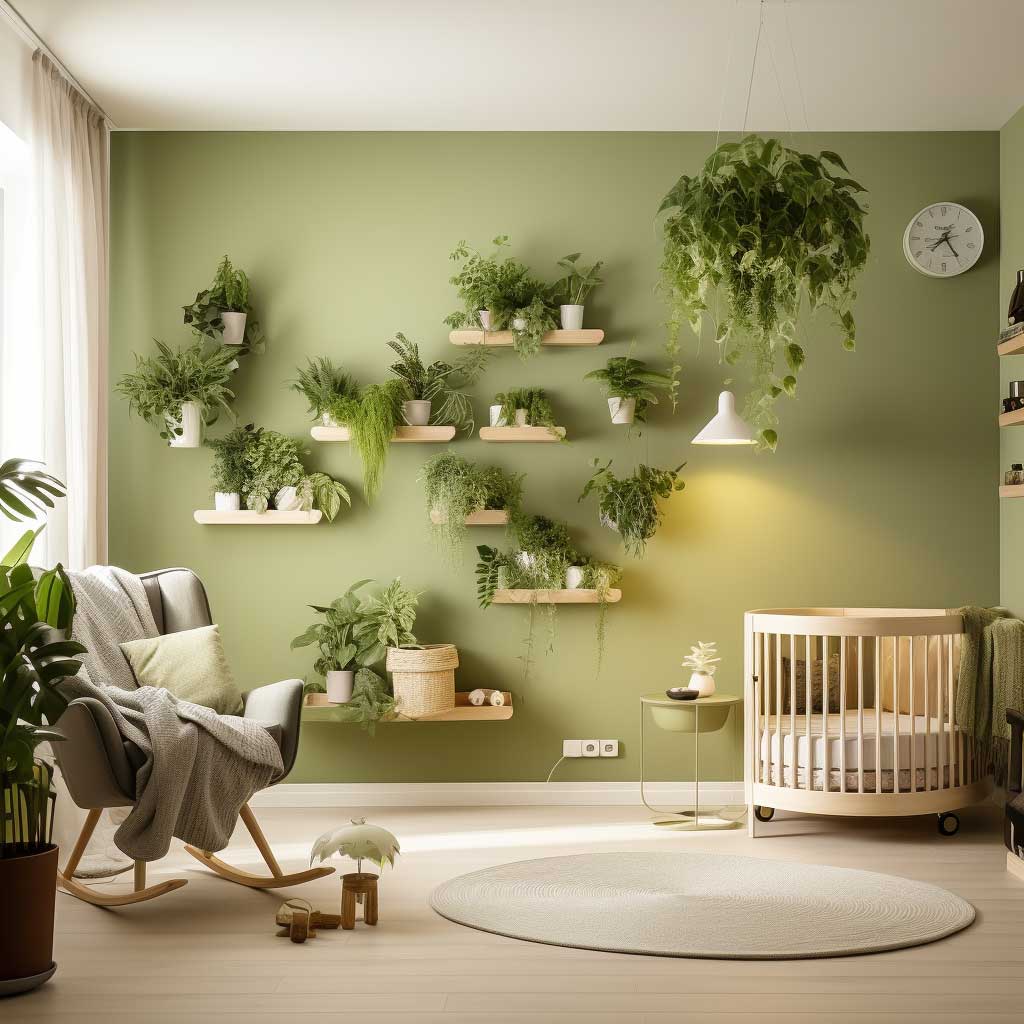

In the world of nursery design, bringing the outdoors in creates a unique and invigorating environment for the youngest members of our families. A green nursery that goes beyond color to include actual elements of nature can transform a conventional space into a verdant oasis. This essay explores how the integration of natural greenery in a nursery can enhance its aesthetic and emotional appeal.
The essence of this design lies in its creative use of the color green, not just as a paint or fabric choice but as a living component of the room. Incorporating potted plants and wall-mounted leaves introduces a dynamic, organic element that enlivens the space. This approach aligns with the biophilic design principles, which posit that connecting with nature directly in our living spaces positively affects our well-being.
Choosing the right plants is key to creating a green oasis in a nursery. It’s essential to select species that are non-toxic and safe for children, such as spider plants, Boston ferns, or rubber plants. These plants not only add beauty but also purify the air, creating a healthier environment for the baby. The use of potted plants allows for flexibility in design; they can be placed on shelves, in corners, or even hung from the ceiling, adding layers of green at different heights.
Wall-mounted greenery, such as leafy vines or wall planters, adds a touch of whimsy and brings a literal sense of life to the walls. This method of incorporating greenery is especially useful in smaller spaces where floor space is at a premium. It creates a focal point that is both visually striking and calming.
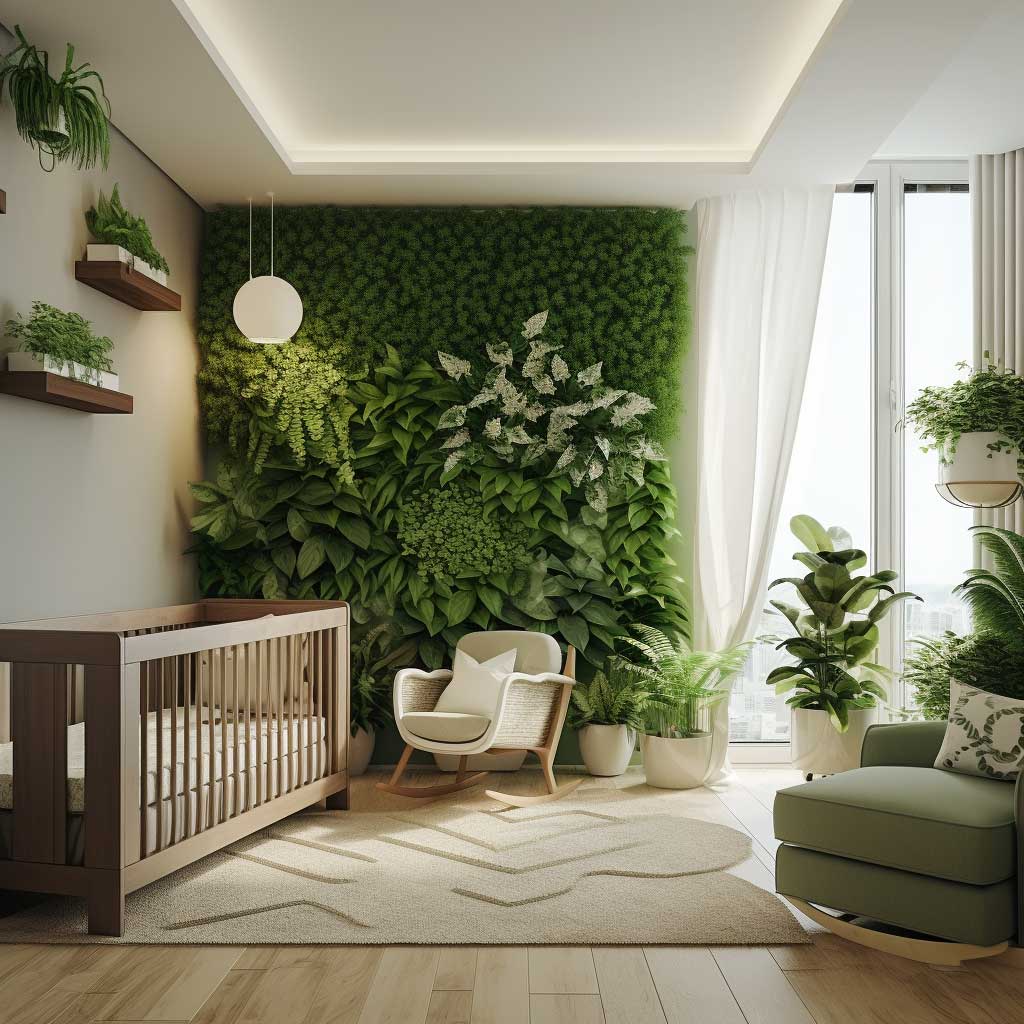
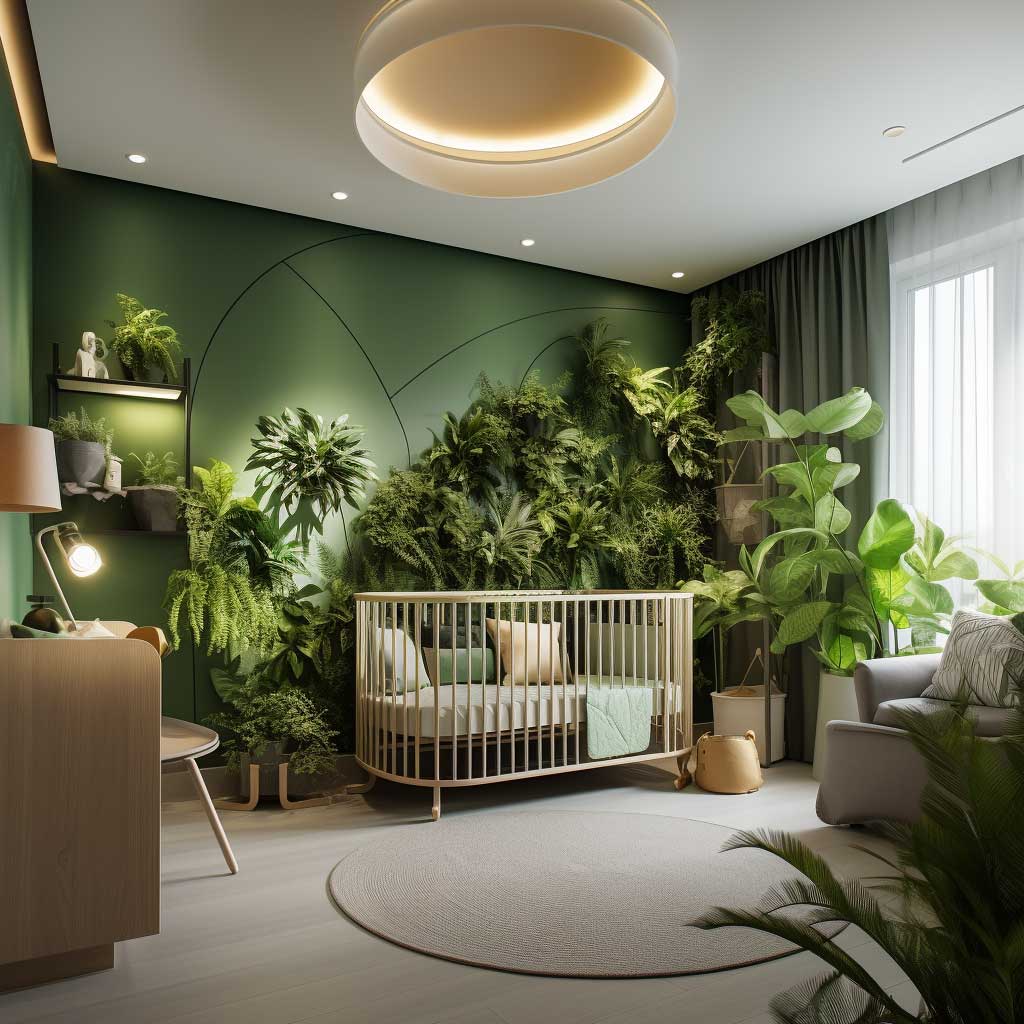
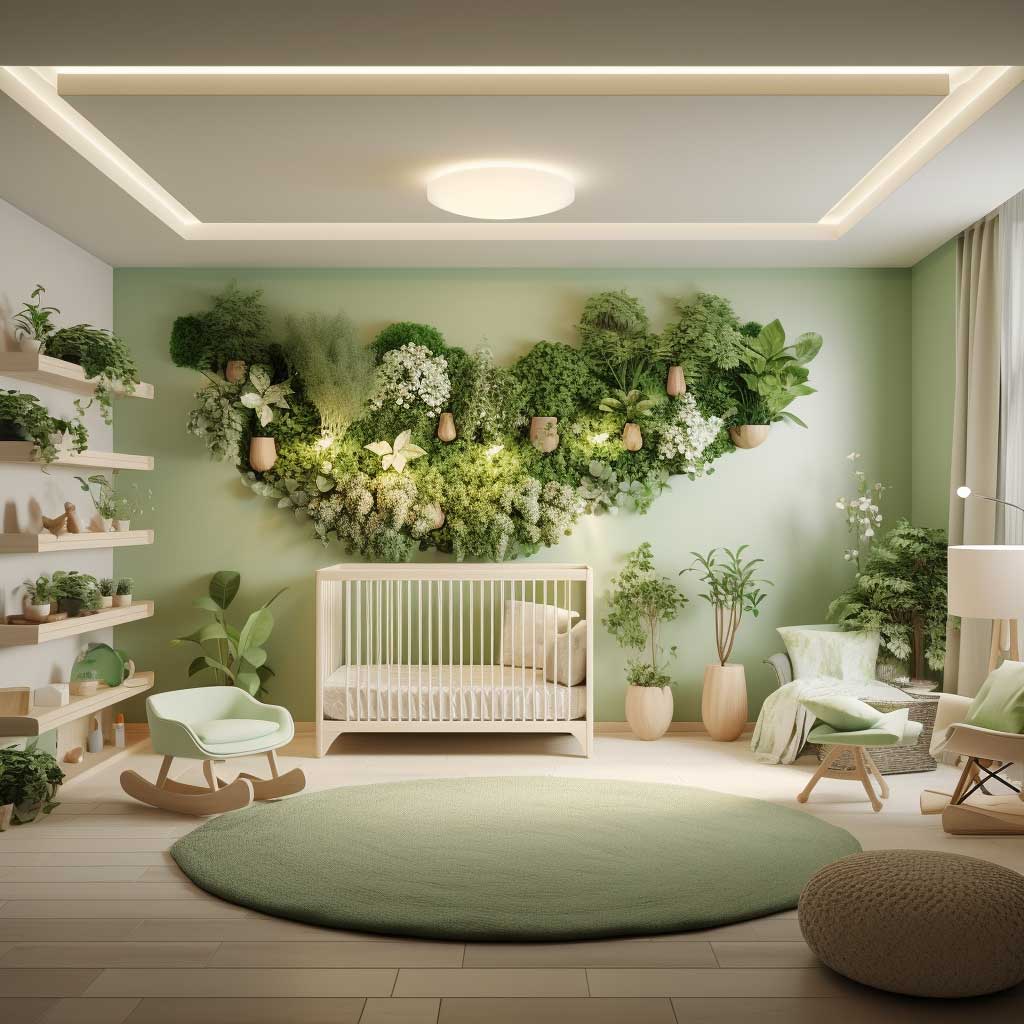
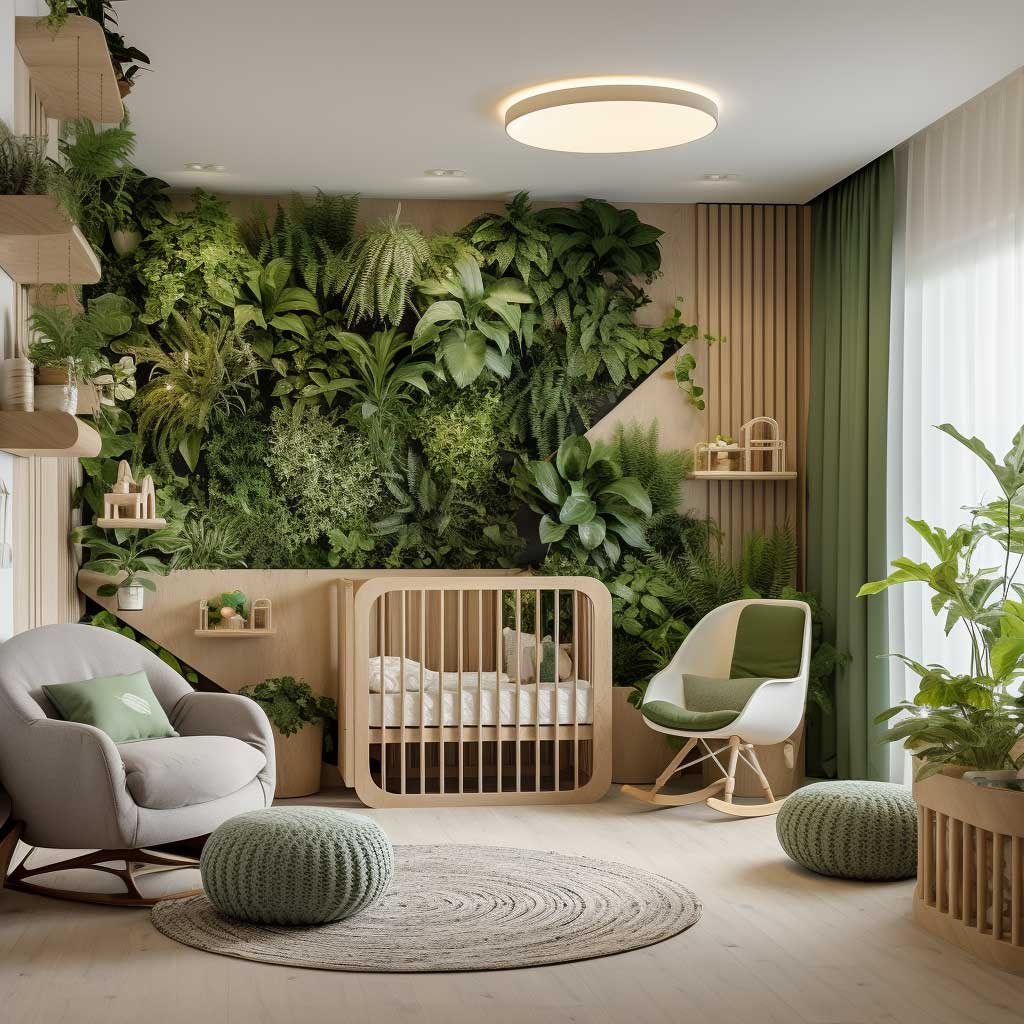
The color palette of this green nursery is naturally centered around green but can be complemented with other earthy tones like browns, beiges, and soft whites. These colors work together to create a harmonious and balanced environment. Textiles, such as curtains and bedding, can feature botanical prints or patterns, further emphasizing the room’s connection to nature.
Furniture in this green nursery maintains a modern aesthetic, with clean lines and a focus on functionality. Materials like light wood or bamboo can complement the natural theme. Furniture should be chosen not only for its look but also for its practicality, ensuring it meets the needs of both the baby and the parents.
Lighting is another crucial element in this design. Natural light is ideal for a green nursery, as it benefits both the plants and the baby. Soft, indirect lighting can be used to maintain a calm and restful atmosphere, especially important during evening and nighttime.
Decorative elements in the room should enhance the green oasis theme. Artwork featuring natural landscapes or botanical motifs, along with wooden or woven decor pieces, can add a final touch to the nursery’s design, creating a cohesive look.
In conclusion, a green nursery that incorporates actual greenery offers more than just aesthetic appeal; it creates a living, breathing space that can stimulate and soothe in equal measure. This approach to nursery design not only nurtures a child’s early development but also instills an early appreciation for nature. By bringing elements of the natural world indoors, parents can create a nurturing, vibrant environment for their children, fostering growth and tranquility in their earliest years.












